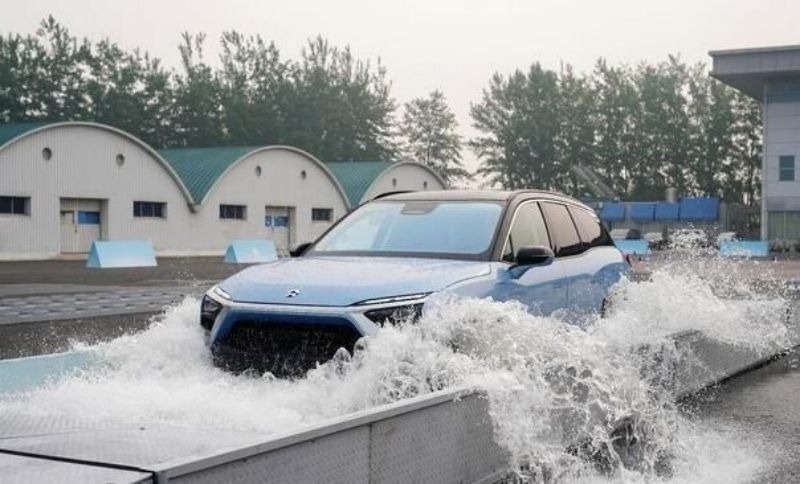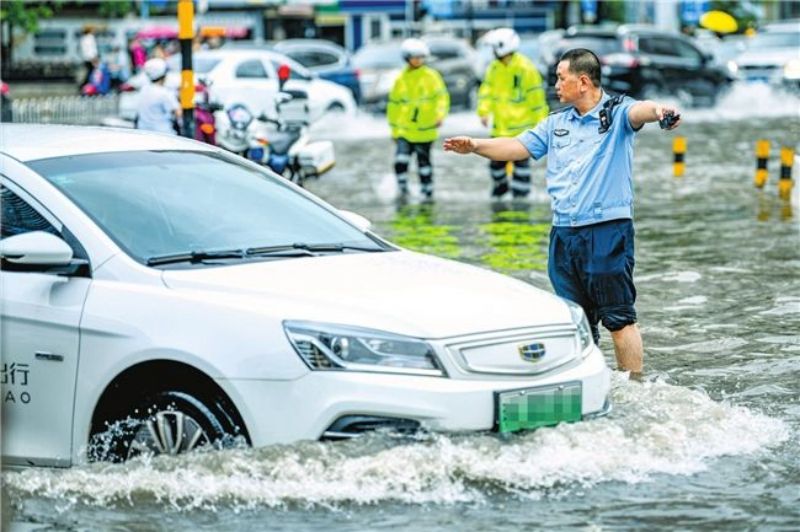Author:Alan ChenDate:2024-1-10

In recent years, new energy vehicles are becoming a new choice for more and more consumers. Compared with traditional fuel vehicles, what should we pay attention to when traveling with new energy vehicles when encountering heavy rains in summer?
Try to avoid going out and wading in water during heavy rains
First of all, try to avoid going out and wading in water during heavy rain.
In traditional fuel vehicles, the engine is divided into four strokes: intake, compression, power, and exhaust. Therefore, if water enters the air inlet of the engine, water may pour into the engine and cause the vehicle to stall.
Most general car models have a wading depth of 200 to 300 mm. SUV models are higher than cars. The wading depth of some models can reach 300 to 400 mm. There are also some professional off-road vehicles (without professional wading modifications) that can wade in water. The depth can reach more than 400 mm.
In contrast, because the design of the "three electric systems" (battery, motor, and electronic control) pays more attention to sealing performance, the probability of the system being flooded is very low, so many new energy vehicles are wading deeper than traditional fuel vehicles.

What is “new energy vehicle battery waterproof rating IP67”?
IP is the abbreviation of Ingress Protection Rating, which refers to the ability of an interface to protect solid particles and liquids.
The first number represents the level of protection against solid particles, which can be understood as dust protection, ranging from 0 to 6. The larger the number, the higher the dust level, and the finer the dust it can prevent;
The second number represents the level of protection against liquids, also known as waterproofing, ranging from 0 to 8. The larger the number, the higher the level of waterproofing, which reflects the protection from vertical water droplets to water bottom pressure.
It can be seen that IP67 has a relatively high level of protection, which can almost completely prevent the intrusion of foreign objects and dust, and ensures integrity even if it is immersed in water for a short period of time.
Driving during heavy rains, driving over waterlogged roads, and normal vehicle wear and tear will make the situation very complicated. Moreover, the road conditions in waterlogged areas are unclear. If you wading into the water rashly, you may accidentally enter the deep water area, which will lead to more serious accidents and even casualties. .

Specific problems that may be encountered mainly include:
1. Accumulated water affects vision and may cause damage to the chassis and battery.
When there is stagnant water on urban roads, it will generally be very turbid, and even clear stagnant water will seriously affect the driver's visual observation of the road condition. In this case, there are likely to be potholes, debris, etc. on the road. If it is Rolling or scratching the chassis and battery may cause serious damage.
2. Water may enter the car along the gaps
When the vehicle's wading depth is too high, although the three-electric system can continue to operate without being affected, water may enter the vehicle along the gaps and soak the floor mats, seats, etc. If not detected and dealt with in time, mold may occur. , odor and accelerated wear and other problems.
3. High-tech accessories may be damaged
Many new energy vehicles use a large number of high-tech products, such as various sensors, cameras, radars and other accessories throughout the vehicle. These accessories may also be damaged by being immersed in water or being impacted by water when driving through water.
4. There is a "water accumulation area" inside the car, which can easily lead to rust.
Since the car body is not a regular shape, after wading into the water, there may be "water accumulation areas" in some parts. In addition, the ventilation inside the car is not smooth, and the accumulated water cannot evaporate for a long time. At this time, the metal parts of the car will easily rust. , thus affecting the service life.
Therefore, even if you drive a new energy vehicle, do not enter waterlogged roads easily.

Can new energy vehicles be charged on rainy days?
According to the new national standards for charging piles, the protection level of the charging gun interface is IP54 before plugging in, and IP55 after plugging in. Make sure that the inside of the charging gun and the charging port are dry before charging.
However, some car owners like to use very long wiring boards to charge their cars. This is very dangerous on rainy days, so be particularly vigilant.
In addition, charging piles may have loose and deformed sealing rings due to improper operation, leading to water intrusion. In addition to rainy days, there are also similar risks caused by falling snow on snowy days. Therefore, it is recommended that you follow the specifications when plugging and unplugging the charging gun. If conditions permit, try to charge at a non-open-air charging pile in rainy and snowy weather.

What should new energy vehicles do when encountering heavy rain or waterlogged roads?
First of all, avoid driving in bad weather. But if you encounter bad weather while driving, here are a few suggestions:
1. Find a high, sheltered location to park your car
You can find a high-lying, sheltered location to park your car, go to nearby large and solid buildings such as shopping malls, hotels and other places to take shelter from the rain, and then continue driving after the weather improves.
2. Before entering a waterlogged road, observe thoroughly
Before a vehicle enters a waterlogged road, it must be fully observed and pay attention to the depth of the water, whether the road surface is solid, and whether there are foreign objects and obstacles in the driving route.
3. Understand the water wading depth of family cars in advance
As for the wading depth of family cars, because different vehicles have different chassis heights, the wading depth is also different. Generally speaking, the water depth cannot exceed the radius of the tire, that is, the water does not cover the car logo in the middle of the wheel. There is usually no danger. If the water covers the car logo in the middle of the wheel, it will be a safety hazard.
4. When driving into waterlogged roads, try to drive at a low speed
When driving into waterlogged roads, try to drive at a low speed and keep the speed below 30 kilometers/hour at a constant speed. At the same time, according to the observations before entering, keep moving forward in a straight line and pass without interruption. Do not stop, change gears or turn the steering wheel suddenly while wading.
↓Next [ What are the daily maintenance precautions for electric vehicles? ]









